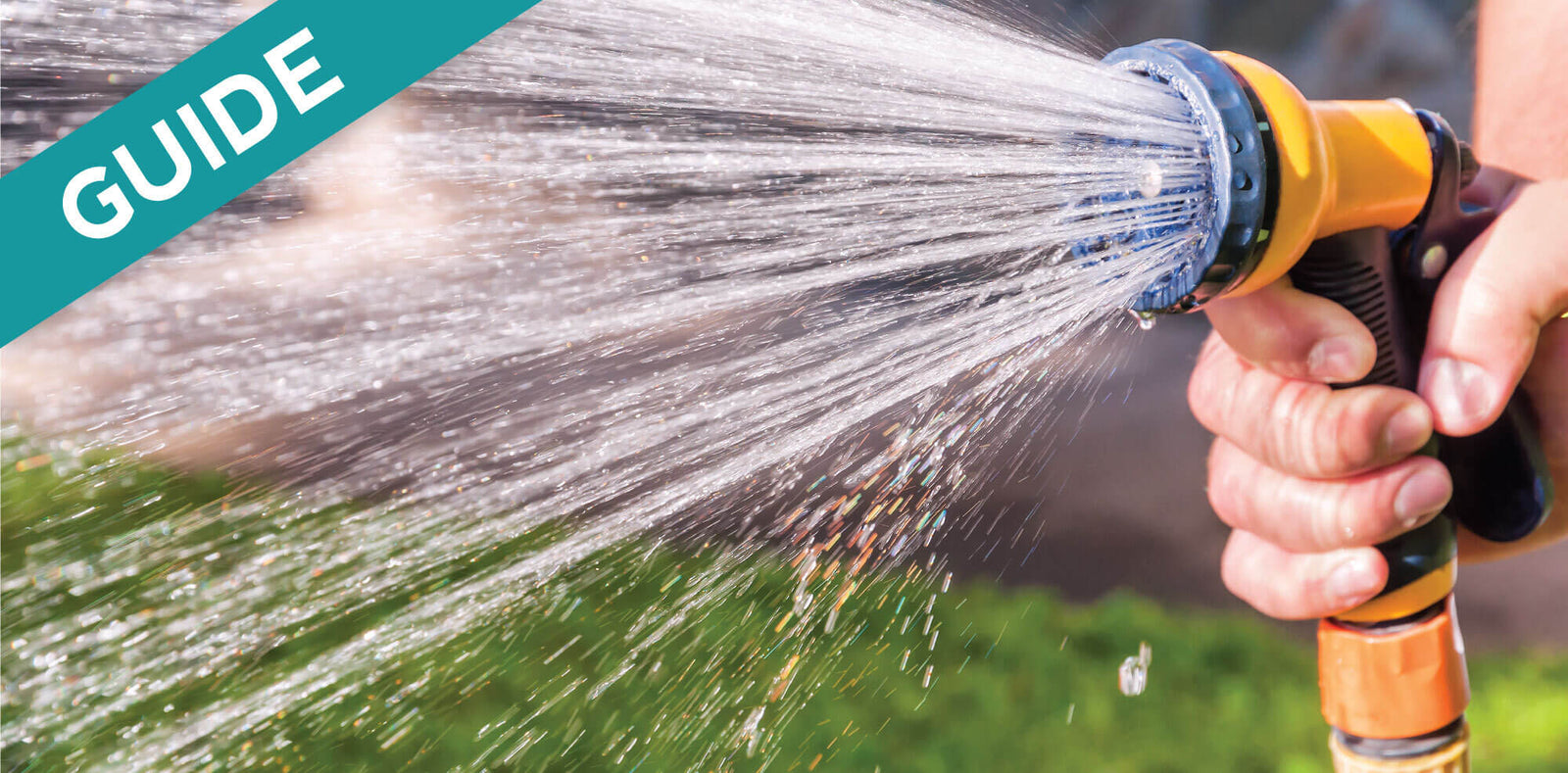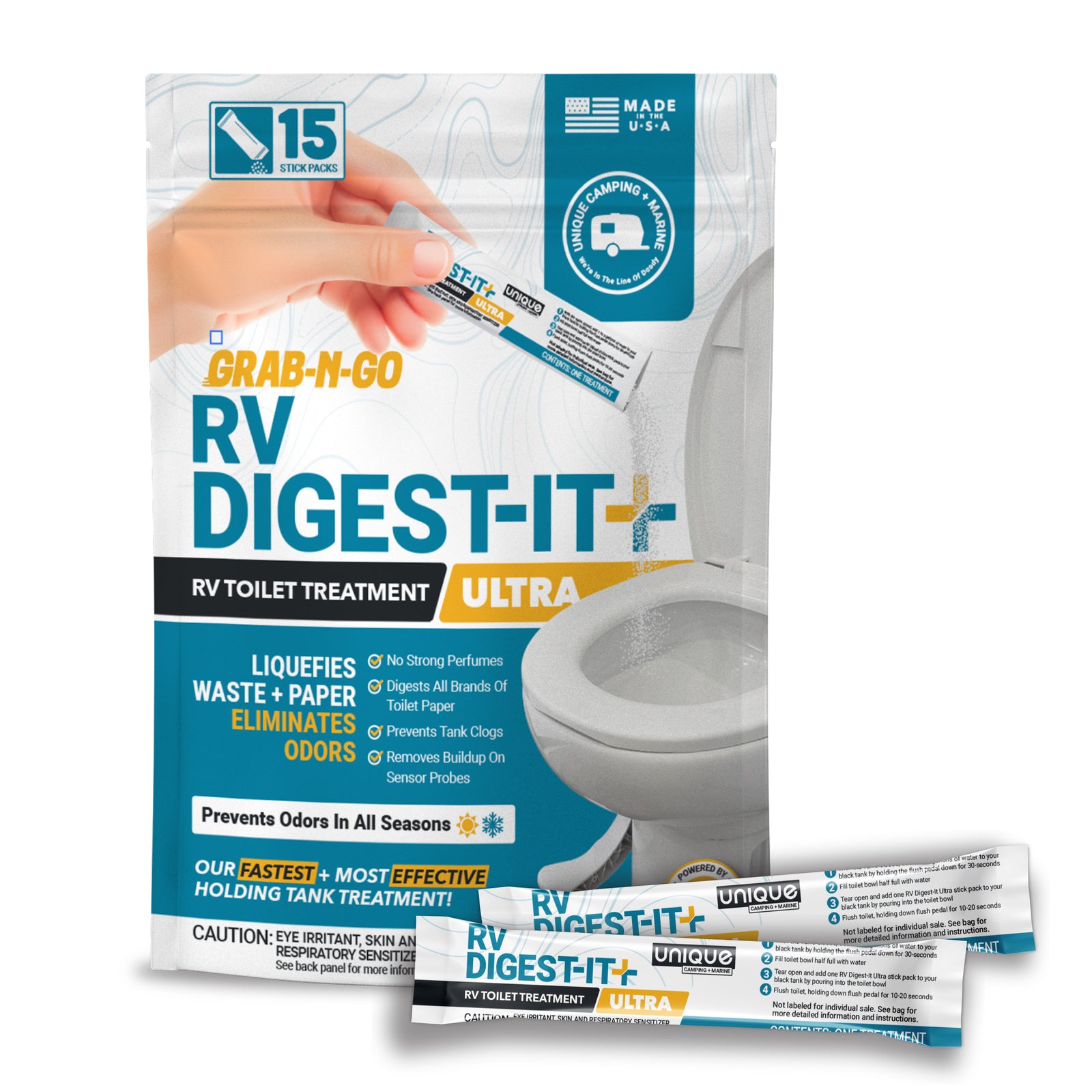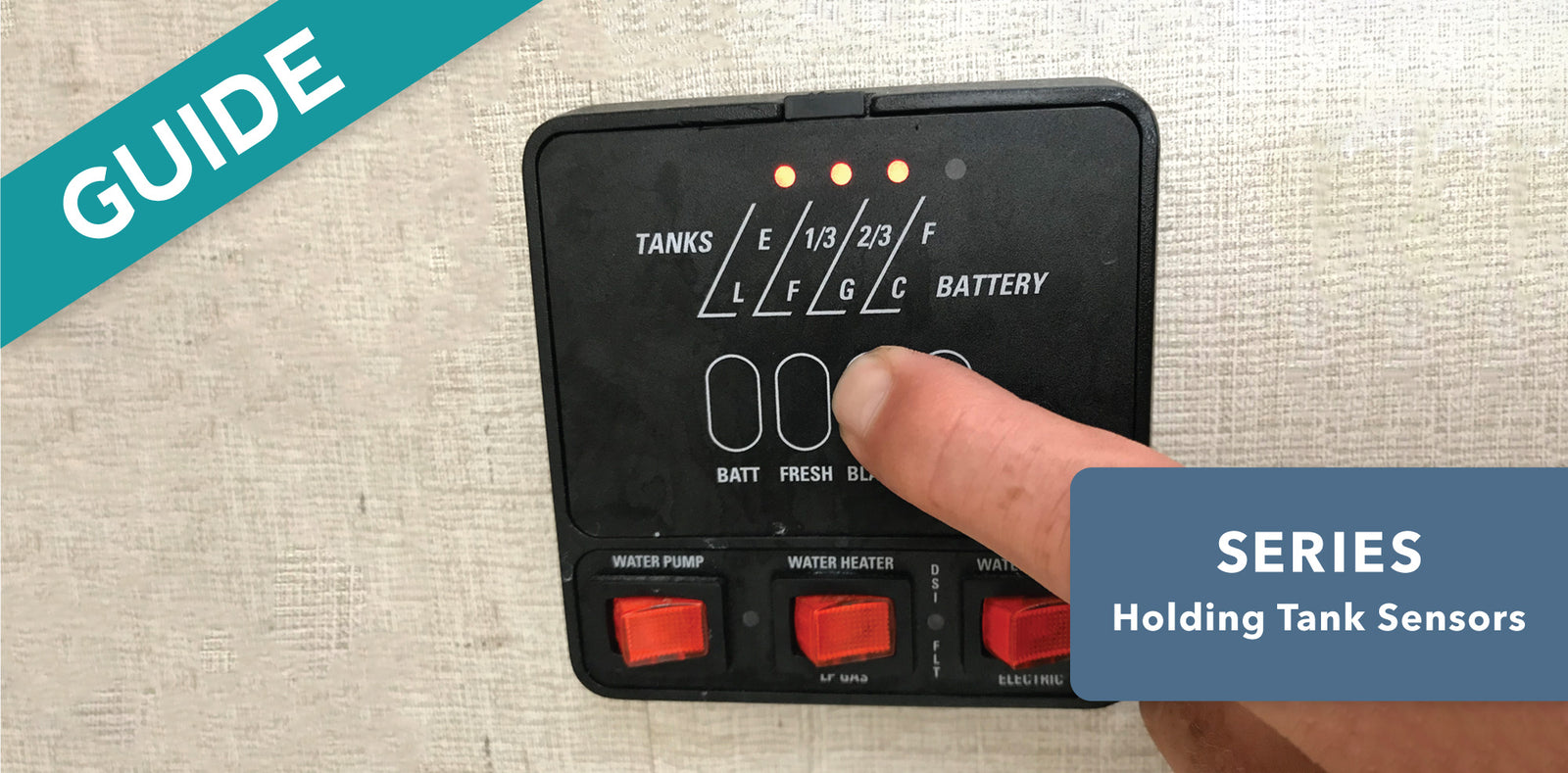
Key Points:
- Black water tank sensors misread because poop and toilet paper are caked on the sensors and gray sensors misread because they become layered with grease and oils.
- Cleaning black tank sensors is an easy process using Restore-It; repeating the process may be necessary to remove stubborn waste from the sensors.
- Cleaning grey tank sensors is an easy process using grease-eating Dawn Ultra dish soap.
- Cleaning sensors in your combo tank depends on how you’re using it; you may need to try both the black and gray sensor cleaning processes.
- When sensors still misread after multiple cleanings, they may have mineral deposits on them or the wiring that connects the sensor may be damaged. In both cases, the sensors will need to be replaced to read accurately.
If you've ever dealt with misreading sensors, you know how frustrating it can be—especially in the middle of a boondocking trip when every drop of tank space counts! Is your tank actually full, or is it just a false alarm? It’s a critical question, and unfortunately, sensors don’t always tell the truth. But don’t worry—there’s no need for frustration! Cleaning misreading sensors in both black and gray tanks is easier than you might think. The key is using the right approach for each type of tank, as they require different products for the best results. In this article, we’ll walk you through the simple steps to restore accuracy to your sensors using Restore-It for black tanks and Dawn Ultra dish soap for grey tanks. Plus, we’ll cover the process for cleaning sensors in black/gray combo tanks, so you can get back to your trip with confidence!
Why Are Your Tank Sensors Malfunctioning?
Let’s quickly review why your sensors may be misreading. Sensors malfunction for these main reasons:
- Something is covering the sensor (which may cause the sensor to not read at all)
- Toilet paper may be stuck to the sensor probe and making contact with water inside the tank (closing the circuit and causing it to misread)
- Sensors have mineral deposits on them (and will need to be replaced)
- Sensors have faulty wiring (and will need to be replaced)
Different things can cover the sensors depending on the type of tank.
- Black water tank sensors – human waste or toilet paper
- Gray/galley tank sensors – grease, oil, mineral deposits
- Black/gray combo tank sensors – human waste, toilet paper, grease and oils can all contribute
Steps for Cleaning Your Black Tank Sensors
Cleaning RV tank sensors and restoring them to their best is quite easy using Restore-It; it can be a little more challenging for full-timers who need to use the black water tank while cleaning the sensors, but we have that process covered too!
- Close your black tank valve.
- Fill your tank with water (you will know the black tank is completely full when you start to see water backing up the pipe that connects the toilet to the black tank.).
- Shake your bottle of Restore-It very well.
- Pour half the bottle into your black water tank through the toilet.
- Let sit for as long as possible (we recommend 72 hours or more if possible).
Note: There is no amount of time that is too long to let Restore-It work; the longer the better! Restore-It can be left inside a black water tank for weeks or months at a time without doing any damage. - Open your black tank valve and dump your tank (make sure you dump at an approved dumpsite).
- Rinse your tank very thoroughly. The most effective method for rinsing is: Closing your black tank, filling your black tank with water, and then opening your black tank valve (repeat two or three times). You can also use a built-in rinser, rinser wand, or backflusher (if you’re not sure how to use one of these tools, refer to our guide on How to Use RV Tank Rinsers and Other Rinsing Tools).
- Close your black tank valve.
- Make sure to wait at least 1 hour to let the tank sensors dry fully and then test the sensors by filling the black water tank again to make sure the level gauge shows tank levels correctly.
- If the sensors read correctly, dump the tank. You’re done!
- If the sensors are still misreading after a second or third cleaning with Restore-It, there could be two courses of action:
- We recommend trying again with Restore-It and avoid the temptation to resort to chemicals. Some chemicals included in products like Drano can cause damage to seals, valves, and other components of your tank, we don't recommend using them.
- Your sensor wires may be broken and should be replaced; contact our customer service team if you need assistance with finding the best course of action to fix the problem.
The process is easy if your RV is sitting in your driveway not being used, but it gets much more challenging when full-time RVers are trying to clean black tank sensors and use the tank at the same time (refer to the Modified Sensor Cleaning for Full Time RVers section below).
Note: Refer to the guide on Full Time RVing: The Definitive Guide To Treating Your Tanks for more details on the best ways to treat your tanks while full-time RVing.
Steps for Cleaning Your Gray Tank Sensors
Unlike black tanks, gray water tank sensors are actually pretty painless and inexpensive to restore. Even full-time RVers will have an easier time cleaning their gray tank sensors than they would cleaning black tank sensors. Sensors loaded with human waste and toilet paper require a strong bacteria and enzyme cleaner like Restore-It, but gray water tank sensors accumulate mostly grease and soap residue. The best way to remove this layer of grime is to use a strong grease-digesting dish soap. We always recommend Dawn Ultra dish soap because it's a fantastic grease-eater and pretty inexpensive; we even recommend using it to clean your dishes because it will continue cutting grease inside the tank(s) after the dishwater is drained and won’t harm any beneficial bacteria you might be adding with tank treatments. We normally recommend buying Dawn Ultra in a large container since you may need to repeat this process several times to fully clean the sensors.
Before starting this process, if you are a hook-up camper who leaves the gray valve open, be sure to close your gray water valve and straighten your hose, removing the P trap bend.
- Before you go to bed, fill your tank with water (as high as the highest misreading sensor).
- Pour 20 ounces or more of Dawn Ultra down your RV’s kitchen sink line (if you think you’ve added enough, add a little more; the more you add, the tougher it will be on grease).
Note: The best way to check if your gray tank is full is to look for soap suds foaming back out of your sink or shower lines. - Let this sit in the gray water tank and pipes overnight while you sleep.
- In the morning, open your gray tank valve and dump the tank (make sure you dump at an approved dumpsite).
Note: There's a very good chance you'll see a grayish/white residue on the bottom of your holding tank discharge pipe. This is the grease that was previously clinging to the inside walls of your holding tank. - Make sure to wait at least 1 hour to let the tank sensors dry completely. If the sensors are still misreading, repeat this process the next night (if necessary) until sensors are restored to proper functionality:
- If the sensors read correctly, dump the tank. You’re done!
- If the sensors are still misreading after a second or third cleaning with Dawn Ultra, there could be two courses of action:
- We recommend trying again with Dawn Ultra and avoid resorting to using chemicals. Some chemicals included in products like Drano may cause damage to seals, valves, and other components of your tank.
- Your sensor wires may be broken and should be replaced; contact our customer service team if you need assistance with finding the best course of action to fix the problem.
The process is the same for all types of campers, so clean your gray tank sensors as often as you feel necessary.
Note: Refer to the guide on Full Time RVing: The Definitive Guide To Treating Your Tanks for more details on the best ways to treat your tanks while full-time RVing.
Cleaning Sensors in Your Black/Gray Combo Tank
Cleaning and restoring sensors in your black/gray combo tank may look a little different depending on how you’re using it.
- Black only - if you are using it exclusively as a black water tank, simply follow the same Steps for Cleaning Your Black Tank Sensors.
- Gray only - if you are using it exclusively as a galley tank or gray water tank, simply follow the same Steps for Cleaning Your Gray Tank Sensors.
- Black and Gray together - if you are using the combo tank for both black and gray water, start by using the Steps for Cleaning Your Black Tank Sensors. If your sensors are still misreading, you may need to perform one more black sensor cleaning procedure or try the Steps for Cleaning Your Gray Tank Sensors, as grease and oil may be caked onto the sensors, something a product like Restore-It (for black water tanks) will not be able to clean very well; Dawn Ultra dish soap would be the best cleaner for that problem.
If you’ve tried these techniques, including the cleaning steps for both black and gray tanks and have still not seen your combo tank sensors restored to proper functionality, your sensors may be broken. As an alternative to internal tank sensors, you can install external level sensors like these SeeLevel RV Tank Sensors, that will not easily be blocked by debris because they are on the outside of the tank; however, debris sticking to the inside of the wall right in front of the external sensor can still cause a misread, so be sure you are following The Unique Method’s guidelines to keep tanks clean and free of waste residue.
Modified Black Tank Sensor Cleaning for Full-Time RVers
If you are a full-time RVer, cleaning RV black tank tank sensors can be a lot trickier when you’re trying to use the wastewater holding tanks at the same time; you may not have the ability to fill the tank completely with water (which is ideal). If you suspect a sensor issue and need to clean them while using your tanks, fill your black tank(s) half or three quarters full with water (depending on anticipated usage), add one bottle of Restore-It per black tank, and continue regularly using your toilet, ideally letting the solution work for a full 72 hours before dumping. The best option is always to clean sensors without using the tanks so that the cleaning solution can reach even the highest sensor, but modifying the cleaning process in order to continue using them should still help to a point, although results may vary.
The gray tank process is the same for full-time RVers as it is for everyone else, so refer to the Steps for Cleaning Your Gray Tank Sensors. Just remember, Restore-It and Dawn Ultra can only clean sensors they can reach; sensors not touched by water will not be cleaned and results may vary.
Review
Let’s briefly review what we covered in this article:
- Sensors misread for several reasons, if one is covered by debris the circuit will not close and it will skip that sensor or if something is caught on the surface of a sensor and is hanging down into the water, that can also complete the circuit and show a misreading on the control panel.
- Clean black tank sensors using Restore-It; full-time RVers will need to modify this process to accommodate continued tank use.
- Clean gray tank sensors using grease-eating Dawn Ultra dish soap overnight while you sleep.
- You may need to try both black and gray sensor cleaning processes when cleaning combo tank sensors; it all depends on how you’re using it.
- When sensors still misread after multiple cleanings, there may be a broken or damaged wire, and in some cases, if hard water or mineral deposits have built up on the sensor, the sensors may need to be replaced.
- The best way to prevent misreading sensors in the future is to follow The Unique Method.
We talked a lot in this guide about using Unique Restore-It for black tank sensors and Dawn Ultra dish soap for gray tank sensors, but you may have seen people in the RVing community recommending other sensor cleaning products and techniques. We want you to have all the straight information on the techniques and products available so you can make your own decision about what is best for your RV. The next article will cover some of the most popular cleaning methods and products and our opinions on their effectiveness.


Misreading Sensors? We Can Help!
Misreading tank sensors are very common and in most cases pretty simple to fix! We’ve helped thousands of RVers restore their misreading sensors in their RV black and gray tanks, and this Field Guide (our free downloadable PDF) is going to help you!
Get The Free Download



